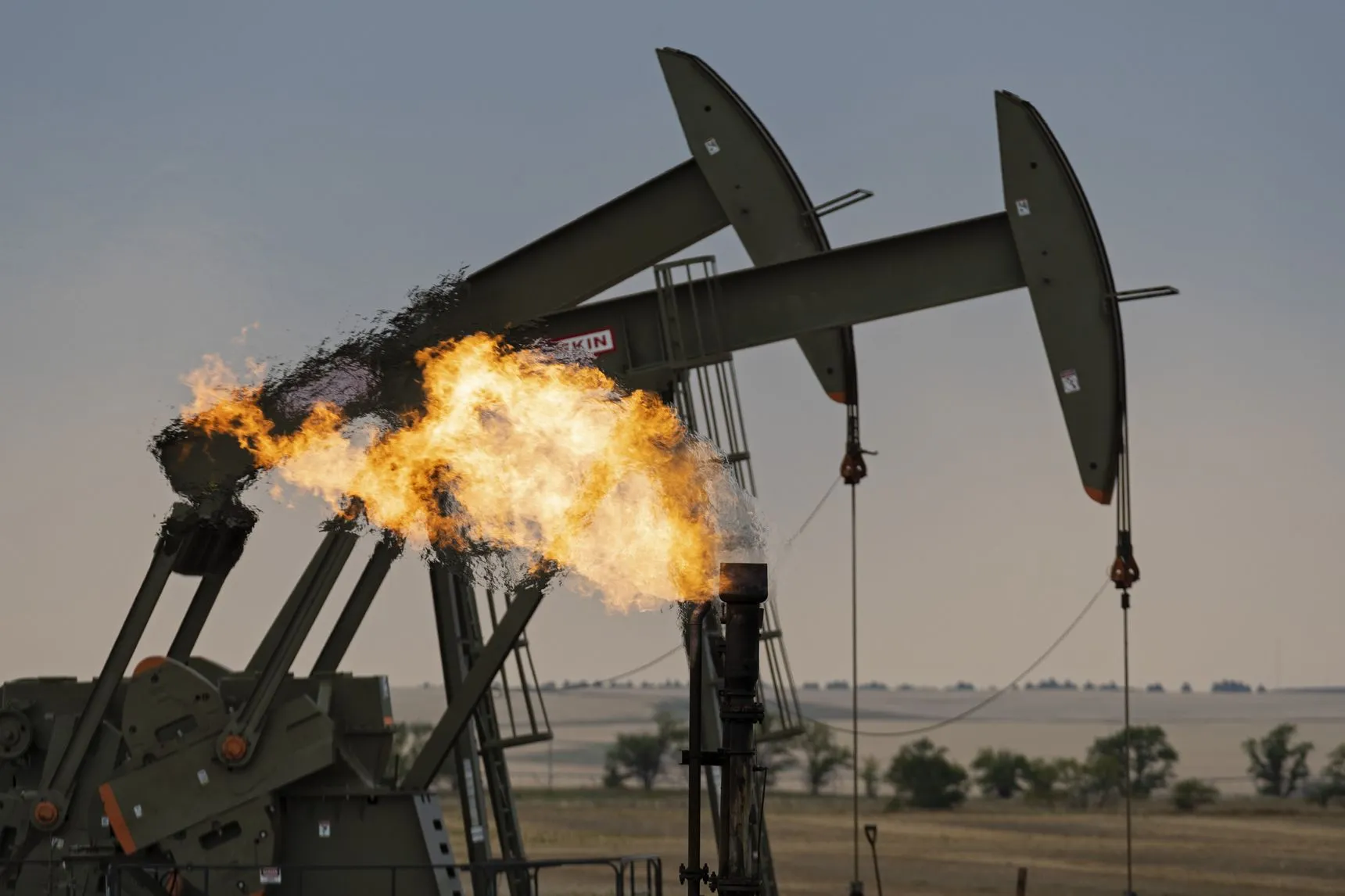Methane emissions from oil and gas wells are much higher than thought, study shows

By Eric Niiler FollowSept. 29, 2022 2:00 pm ET
Emissions of methane from oil and natural gas wells are far higher than previously thoughtbecause a technique the facilities use to prevent the greenhouse gas from escaping into the atmosphere isn’t working as expected, scientists said in a study published Thursday in the journal Science.
Called flaring, the technique involves burning natural gas that leaks from wells—much as a stove’s pilot light burns gas. The study, which involved testing the air around 300 flares in four states, showed that many flares were unlit or operating inefficiently. As a result, emissions from the flaring facilities of methane—the principal constituent of natural gas—are five times greater than previous estimates by the U.S. Environmental Protection Agency. That means overall methane emissions from U.S. oil and gas production are about 10% higher thanprevious EPA estimates, according to the study.
If all the flares were working properly, “it would be equivalent to removing about nine million cars from the road,” said study co-author Dr. Eric Kort, associate professor of climate and space sciences and engineering at the University of Michigan.
An EPA standard calls for flares to burn methane with 98% efficiency. The study put the flares’ efficiency at about 91%.
The escape of methane from flares at oil and gas mining operations “appears to be a more widespread problem than we thought,” said Dr. Riley Duren, chief executive officer of Carbon Mapper, a nonprofit organization in Pasadena, Calif., and a University of Arizona research scientist who wasn’t involved in the study.
The study showed that about 500,000 metric tons of methane a year were bypassing flares at U.S. facilities. Worldwide, flares at oil and gas wells released eight million tons of methane into the atmosphere in 2021, the International Energy Agency said in a report issued in August.
A colorless, odorless gas, methane is second only to carbon dioxide as a contributor to rising global temperatures, according to the EPA.
Though less of it is released into the atmosphere, it is about 85 times more potent than carbon dioxide at trapping heat. Consequently, it accounts for about 30% of the rise in global temperatures observed in the past century, according to the IEA.
Flaring turns methane gas into carbon dioxide and water vapor, both of which are greenhouse gases. But molecule for molecule, methane traps far more heat in the atmosphere than water vapor or carbon dioxide.
President Biden pledged at a 2021 climate summit in Glasgow, Scotland, to cut U.S. methane emissions by 30% by 2030 and urged world leaders to do the same. More than 100 countries have since joined the pledge. The Inflation Reduction Act signed into law in August includes provisions for a new $900-per-metric-ton tax on methane emissions from oil and gas producers. The tax goes into effect in 2024.
The oil-and-gas industry is the second-leading contributor of methane emissions in the U.S., behind agriculture and ahead of landfills, waste treatment plants and coal mining, according to the EPA. The industry accounts for roughly one-third of U.S. methane emissions.
For the study, researchers on the ground used infrared imagery to check flares at oil and gas wells in the Permian and Eagle Ford fields in Texas and New Mexico and the Bakken field in parts of North Dakota and Montana. The researchers also flew on aircraft with specialized gear to take air samples over wells, which were operated by dozens of companies.
The fields account for 80% of oil and gas production in the U.S.
The researchers didn’t identify the companies whose facilities were tested, nor did they alert the firms that the tests were being conducted. All ground sampling was done from public roads.
Members of the American Petroleum Institute are using continuous monitoring and laser based aerial surveys to detect and curb methane emissions from flaring, according to Cole Ramsey, vice president of upstream policy for the Washington-based industry group.
Improving the efficiency of the flares would require tweaks to flaring equipment and ensuring that the flares remain lit, according to Matthew Johnson, professor of mechanical and aerospace engineering at Carleton University in Ottawa and an expert on mitigating methane emissions. “This could be fixed in a month,” Dr. Johnson said. “There’s really no reason for an unlit flare to persist."


